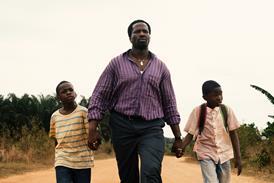- News
- Reviews
- Features
- Festivals
- Box Office
- Awards
 Kathryn Bigelow on the inspiration behind nuclear-strike thriller ‘A House Of Dynamite’: “I was interested in discussing the unthinkable”
Kathryn Bigelow on the inspiration behind nuclear-strike thriller ‘A House Of Dynamite’: “I was interested in discussing the unthinkable” Sope Dirisu on celebrating Nigerian culture in ‘My Father’s Shadow’ and his upcoming projects
Sope Dirisu on celebrating Nigerian culture in ‘My Father’s Shadow’ and his upcoming projects “It is the DNA of my own story”: Guillermo del Toro on making ‘Frankenstein’ and casting Jacob Elordi as his Creature
“It is the DNA of my own story”: Guillermo del Toro on making ‘Frankenstein’ and casting Jacob Elordi as his Creature
- Subscribe

Subscribe to Screen International
- Monthly print editions
- Awards season weeklies
- Stars of Tomorrow and exclusive supplements
- Over 16 years of archived content
- Global production
‘Oppenheimer’ cinematographer breaks down four key scenes: "Limitations become advantages"
By Mark Salisbury2024-02-14T11:24:00

Source: Universal Pictures
Hoyte van Hoytema shot Oppenheimer in black-and-white and colour, telling a story that spans cramped interiors and expansive spectacle. The cinematographer talks to Mark Salisbury about filming four key scenes in Christopher Nolan’s blockbuster epic.
SIGN IN if you have an account
Do you want to keep reading?
Register for free access to five articles a month

Subscribe today and unlock access to:
- Unlimited film & TV news, reviews and analysis on Screendaily.com
- All print and/or digital editions of Screen magazine
- Breaking news alerts sent straight to your inbox
- Digital festival and market dailies
- Weekly awards magazines
Access premium content Subscribe today
If you have an account you can SIGN IN now
Subscribe to Screen International
Screen International is the essential resource for the international film industry. Subscribe now for monthly editions, awards season weeklies, access to the Screen International archive and supplements including Stars of Tomorrow and World of Locations.
Find out moreSite powered by Webvision Cloud












